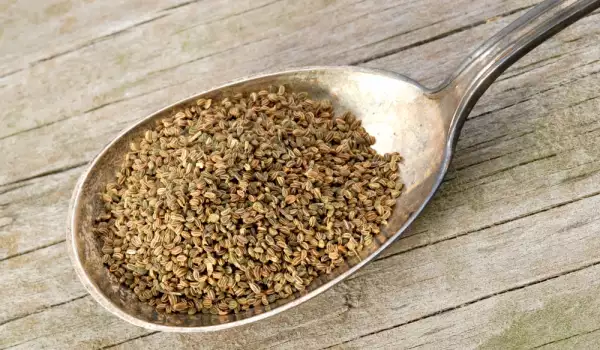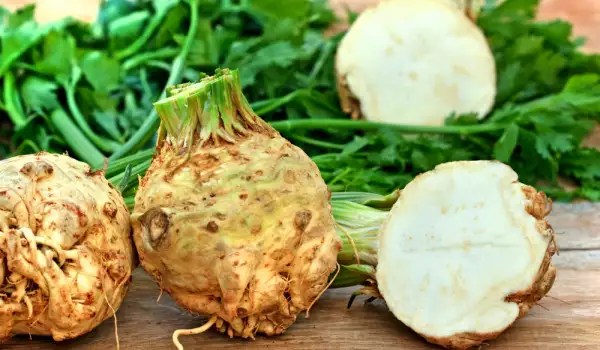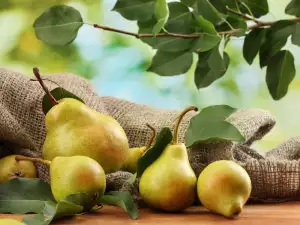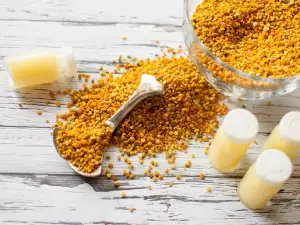Perhaps you've seen a muesli commercial in which a young, smiling girl casually bites into a stalk of celery? This is not just a prop to emphasize the dietary message, but a slight steal from the fame of the widely known pale green vegetable.
You must be wondering what is actually hidden behind the name of the popular plant? The answer is simple. Translated from English celery means only one thing: celery. In the medical annals of the 9th century, it is noted as a medicine - long before it was liked as a food. During the Middle Ages, it became a vegetable generally available throughout Europe, and Americans only found out about its crunchy charm in 1900.
Depending on the culinary culture, different people prefer to grow a particular variety of celery. The plant is part of the umbelliferae family along with parsnip, dill, fennel, parsley and lovage.
Being a vegetable with a high water content, celery needs fertile, moisture-rich soil. This may explain why its origins can be traced from Sweden to Algeria, Egypt and India. In a large area in Punjab, emphasis is placed exclusively on the production of celery seed for export to Europe, where it is used as a spice.

Pascal is an aromatic variety of celery with thick and fleshy stalks, reaching 50-60 cm and grown most often in the States.
As for its culinary advantages, its taste stands out in combination with many other products. Celery is a great addition to tuna or egg salad. Served thinly sliced with potatoes and mayonnaise dressing, or mixed into energy vegetable salad with carrots, peppers and onions, it can charm you forever.
The crunchy vegetable goes well with teriyaki, orange or cream sauce. Any dish in which there is stewed meat with celery also becomes incomparably delicious, and vegetable soup with its finely chopped stalks becomes an irresistible and warm reminder of grandmother's stews seasoned generously with celery.
However, when celery is boiled or blanched (immersed in boiling water), more than a third of its nutrients can be lost. To preserve them as much as possible, steaming is the best cooking method. Studies show that cooked this way for up to 10 minutes, celery retains 83 to 99 percent of its renowned antioxidant properties. You can store it in the refrigerator for five to seven days, but since the vegetable tends to absorb the odors of other foods, wrap it in plastic wrap for fresh storage.
Celery composition

In case you haven't guessed, let's just say: celery's nutritional profile is extremely low in calories—just 16 in one teaspoon of the chopped vegetable. That's one of the reasons why it's so popular with dieters. At the same time, celery is made up of many ballast substances that move food through the digestive tract faster and therefore help lower the risk of colon cancer.
The interesting thing about this vegetable is how many and different vitamins and minerals it offers. Just one cup of chopped celery can provide ten percent of our daily needs for vitamin A and folic acid, 8% of potassium, and 5% of manganese, copper, phosphorus, magnesium and calcium. Celery also contains vitamin C, pantothenic acid, vitamin B6, niacin and riboflavin, as well as lots of vitamin K.
Celery is a rich source of flavonoids such as zeaxanthin, lutein, and beta-carotene, which numerous studies have shown to fight inflammation, protect against cardiovascular disease, improve immune system function, suppress the growth of abnormal cancer cells, and are extremely beneficial in combination for eye health.
According to a 2010 study from the University of Illinois, memory loss and inflammation in the brain can be stopped by adding celery to the diet. Luteolin, a valuable nutrient in celery, was tested on two-year-old mice. On the other hand, small mice aged three to six months that did not consume luteolin were also observed. The results showed that the older animals performed cognitive tasks testing their memory even better than the younger ones.
Apigenin - bioflavonoid, which is found in celery and parsley, also surprised scientists with its good results in suppressing the development of breast cancer cells.
For centuries Ayurveda has used celery stalks and seeds to treat colds and flu, indigestion, arthritis, and liver and spleen problems. Nowadays, celery is considered a superb diuretic. It is rich in electrolytes and has a cooling effect on the body, which is also associated with its ability to fight inflammation. Celery can also be relied upon for reducing oxidative stress on the heart and cleansing the digestive system.
For more benefits, you can refer to our suggestions for:




















Comments